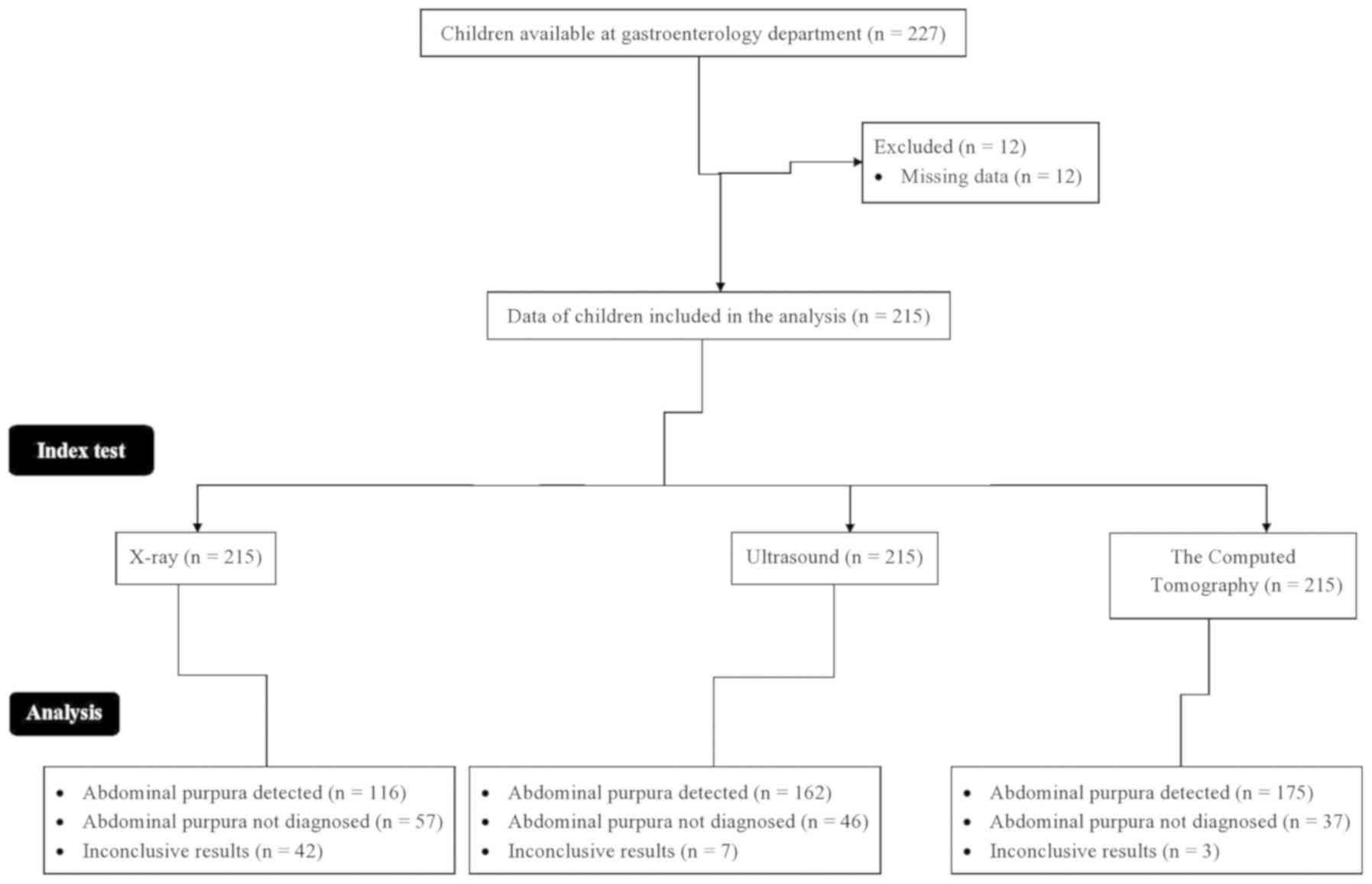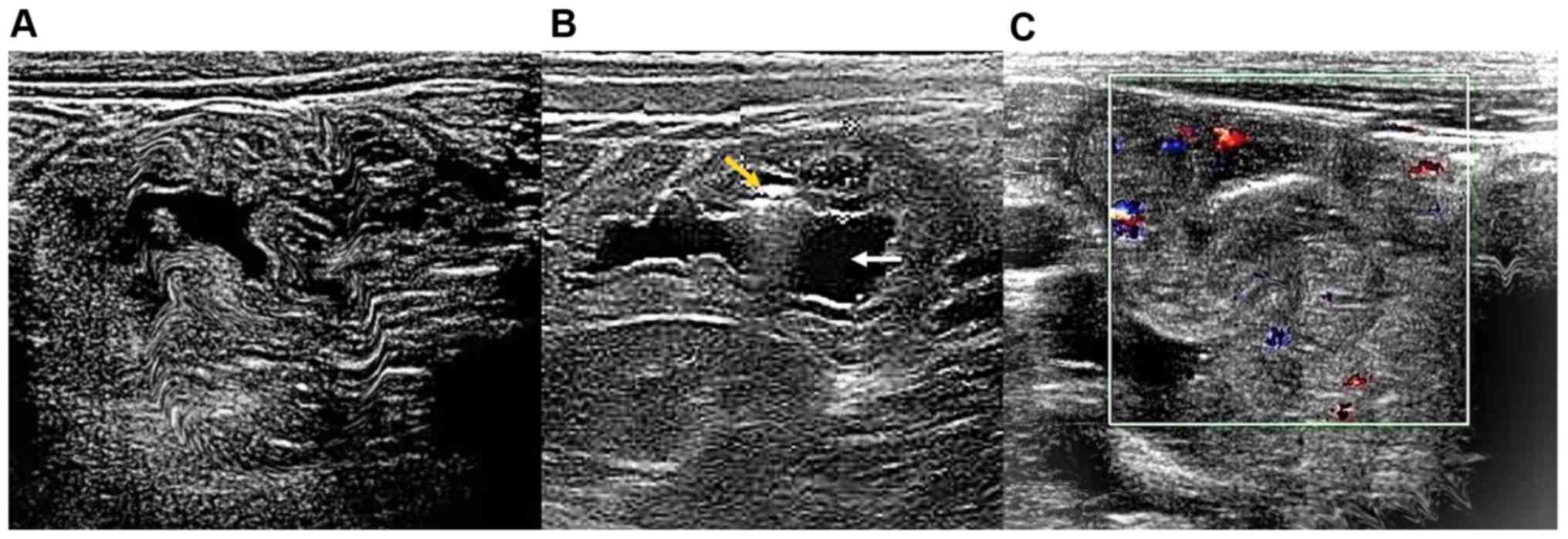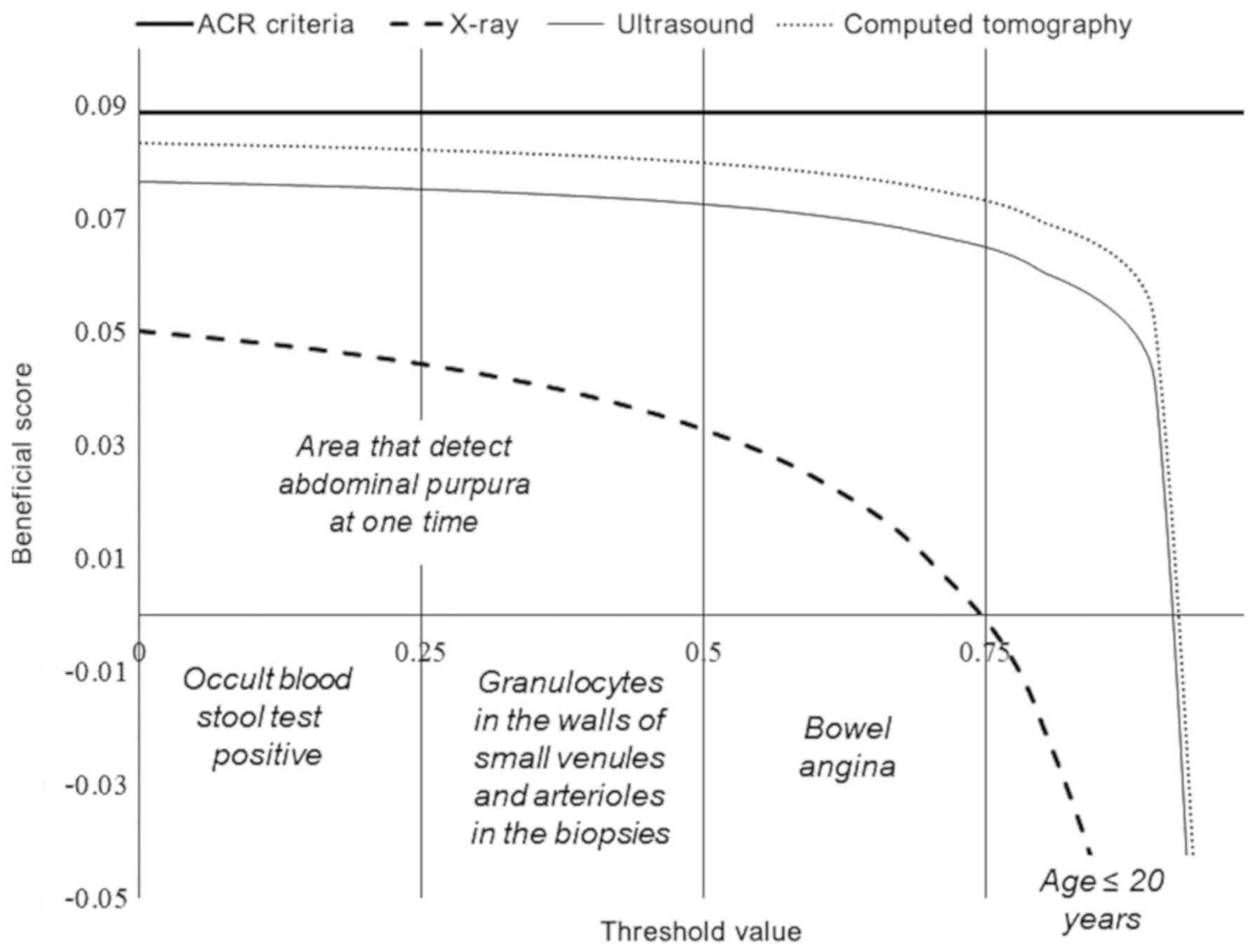|
1
|
Başaran Ö, Cakar N, Uncu N, Celikel BA,
Kara A, Cayci FS, Taktak A and Gür G: Plasma exchange therapy for
severe gastrointestinal involvement of henoch schönlein purpura in
children. Clin Exp Rheumatol. 33 (Suppl 89):S176–S180.
2015.PubMed/NCBI
|
|
2
|
Srivali N, Ungprasert P, Ahmed S,
Cheungpasitporn W and Bischof EF: A case of childhood vasculitis
presenting in adulthood. Am J Emerg Med. 31:254–255.
2013.PubMed/NCBI View Article : Google Scholar
|
|
3
|
Lim CJ, Chen JH, Chen WL, Shen YS and
Huang CC: Jejunojejunum intussusception as the single initial
manifestation of Henoch-Schönlein purpura in a teenager. Am J Emerg
Med. 30(2085)2012.PubMed/NCBI View Article : Google Scholar
|
|
4
|
McPartland K and Wright G: Acute abdominal
pain: Henoch-Schönlein purpura case in a young adult, a rare but
important diagnosis. Clin Med (Lond). 19:77–79. 2019.PubMed/NCBI View Article : Google Scholar
|
|
5
|
Zhang Q, Guo Q, Gui M, Ren Z, Hu B, Lu L
and Deng F: Henoch-Schönlein purpura with acute pancreatitis:
Analysis of 13 cases. BMC Pediatr. 18(159)2018.PubMed/NCBI View Article : Google Scholar
|
|
6
|
Yang YH, Yu HH and Chiang BL: The
diagnosis and classification of Henoch-Schönlein purpura: An
updated review. Autoimmun Rev. 13:355–358. 2014.PubMed/NCBI View Article : Google Scholar
|
|
7
|
Keenswijk W, Van Renterghem K and Vande
Walle J: A case report of a child with purpura, severe abdominal
pain, and hematochezia. Gastroenterology. 153:e10–e11.
2017.PubMed/NCBI View Article : Google Scholar
|
|
8
|
Yang Z, Guo L, Xiong H, Gang Z, Li JX,
Deng YP, Dawa QZ, Pubu ZX and Li H: Clinical analysis of childhood
Henoch-Schonlein purpura on the Tibetan Plateau, China. Zhongguo
Dang Dai Er Ke Za Zhi. 16:1231–1235. 2014.PubMed/NCBI(In Chinese).
|
|
9
|
Batu ED and Ozen S: Vasculitis: Do we know
more to classify better? Pediatr Nephrol. 30:1425–1432.
2015.PubMed/NCBI View Article : Google Scholar
|
|
10
|
Reamy BV, Williams PM and Lindsay TJ:
Henoch-Schönlein purpura. Am Fam Physician. 80:697–704.
2009.PubMed/NCBI
|
|
11
|
BMJ Best Practice. Evaluation of abdominal
pain in children. https://bestpractice.bmj.com/topics/en-us/787/diagnosis-approach.
Accessed December 1, 2018.
|
|
12
|
Brody AS, Frush DP, Huda W and Brent RL:
American academy of pediatrics section on radiology. Radiation risk
to children from computed tomography. Pediatrics. 120:677–682.
2007.PubMed/NCBI View Article : Google Scholar
|
|
13
|
Chang WL, Yang YH, Lin YT and Chiang BL:
Gastrointestinal manifestations in Henoch-Schönlein purpura: A
review of 261 patients. Acta Paediatr. 93:1427–1431.
2004.PubMed/NCBI View Article : Google Scholar
|
|
14
|
Teng X, Gao C, Sun M and Wu J: Clinical
significance of fecal calprotectin for the early diagnosis of
abdominal type of Henoch-Schonlein purpura in children. Clin
Rheumatol. 37:1667–1673. 2018.PubMed/NCBI View Article : Google Scholar
|
|
15
|
Ozen S, Pistorio A, Iusan SM, Bakkaloglu
A, Herlin T, Brik R, Buoncompagni A, Lazar C, Bilge I, Uziel Y, et
al: Paediatric rheumatology international trials organisation
(PRINTO). EULAR/PRINTO/PRES criteria for Henoch-Schönlein purpura,
childhood polyarteritis nodosa, childhood wegener granulomatosis
and childhood takayasu arteritis: Ankara 2008. Part II: Final
classification criteria. Ann Rheum Dis. 69:798–806. 2010.PubMed/NCBI View Article : Google Scholar
|
|
16
|
Kirpalani H and Nahmias C: Letter:
Radiation risk to children from computed tomography. Pediatrics.
121:449–450. 2008.
|
|
17
|
Pelin M, Paquette B, Revel L, Landecy M,
Bouveresse S and Delabrousse E: Acute appendicitis: Factors
associated with inconclusive ultrasound study and the need for
additional computed tomography. Diagn Interv Imaging. 99:809–814.
2018.PubMed/NCBI View Article : Google Scholar
|
|
18
|
Chen O, Zhu XB, Ren P, Wang YB, Sun RP and
Wei DE: Henoch schonlein purpura in children: Clinical analysis of
120 cases. Afr Health Sci. 13:94–99. 2013.PubMed/NCBI View Article : Google Scholar
|
|
19
|
Liu LJ, Yu J and Li YN: Clinical
characteristics of Henoch-Schönlein purpura in children. Zhongguo
Dang Dai Er Ke Za Zhi. 17:1079–1083. 2015.PubMed/NCBI(In Chinese).
|



















